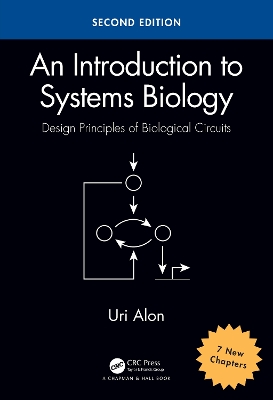Chapman & Hall/CRC Computational Biology
2 total works
Praise for the first edition:
... superb, beautifully written and organized work that takes an engineering approach to systems biology. Alon provides nicely written appendices to explain the basic mathematical and biological concepts clearly and succinctly without interfering with the main text. He starts with a mathematical description of transcriptional activation and then describes some basic transcription-network motifs (patterns) that can be combined to form larger networks. - Nature
[This text deserves] serious attention from any quantitative scientist who hopes to learn about modern biology ... It assumes no prior knowledge of or even interest in biology ... One final aspect that must be mentioned is the wonderful set of exercises that accompany each chapter. ... Alon's book should become a standard part of the training of graduate students. - Physics Today
Written for students and researchers, the second edition of this best-selling textbook continues to offer a clear presentation of design principles that govern the structure and behavior of biological systems. It highlights simple, recurring circuit elements that make up the regulation of cells and tissues. Rigorously classroom-tested, this edition includes new chapters on exciting advances made in the last decade.
Features:
- Includes seven new chapters
- The new edition has 189 exercises, the previous edition had 66
- Offers new examples relevant to human physiology and disease
The book website including course videos can be found here: https://www.weizmann.ac.il/mcb/UriAlon/introduction-systems-biology-design-principles-biological-circuits.
Why do we get certain diseases, whereas other diseases do not exist?
In this book, Alon, one of the founders of systems biology, builds a foundation for systems medicine.
Starting from basic laws, the book derives why physiological circuits are built the way they are. The circuits have fragilities that explain specific diseases and offer new strategies to treat them.
By the end, the reader will be able to use simple and powerful mathematical models to describe physiological circuits. The book explores, in three parts, hormone circuits, immune circuits, and aging and age-related disease. It culminates in a periodic table of diseases.
Alon writes in a style accessible to a broad range of readers - undergraduates, graduates, or researchers from computational or biological backgrounds. The level of math is friendly and the math can even be bypassed altogether. For instructors and readers who want to go deeper, the book includes dozens of exercises that have been rigorously tested in the classroom

